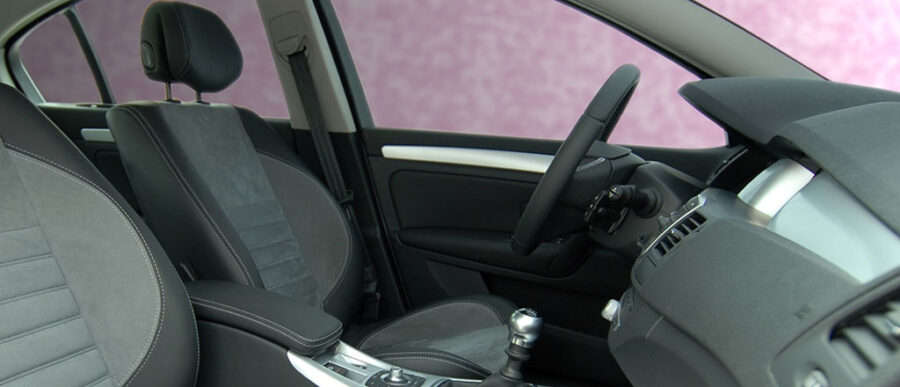A project to test driverless vehicles that launched Wednesday in the U.K. has brought focus on safety, insurance and regulatory issues. The U.K. project will conduct trials of driverless shuttle cars in London’s Greenwich borough and in Bristol. The government will study public reaction and related legal and insurance aspects. John Vincent Cable, the British secretary of state for business, has said he expects driverless vehicles to become a £900 billion ($1.4 trillion) industry over the next decade.
Driverless vehicles will certainly become reality, but not any day soon, said Wharton management professor John Paul MacDuffie. “The auto industry is over 100 years old,”he said. “[The introduction of driverless vehicles] is probably the biggest set of changes since the 1920s.”
MacDuffie discussed the technology on the Knowledge at Wharton show on Wharton Business Radio on SiriusXM channel 111. (Listen to the podcast at the top of this page.) “ is at that exciting moment where everybody is filled with all the visions of the future,” he noted.
Rapid Progress
According to MacDuffie, the technology for driverless vehicles has shown rapid progress worldwide. “The technology [is] racing ahead of everything else, including agreement to use the technologies, how to regulate them and how to insure them in this case,” he said, adding that there will likely be a long wait before the technology moves from “driver-assist” features to one where drivers can take their hands off their vehicle steering wheels.
Meanwhile, the British example “shows it can happen now,”he said. He cited Google’s extensive trials with driverless vehicles. “They have vehicles that can drive completely hands off,”he said. He also referenced Google’s recent announcement that its efforts will focus on settings for low-speed and controlled-access, much like in the British trials. “A lot of the complicated issues about the use of this technology go away when you get to very low speeds, and you don’t have as many distractions for the vehicle to deal with.”
Beyond Cruise Control
Meanwhile, driver-assist technologies have advanced rapidly, said MacDuffie. He noted that driver-assist features such as cruise control have been around for many years. “We’ve got vehicles already that have lane-drift alert,”he said. “Before long, it will be common to have lane control — a little bit like cruise control — where the car will keep you in the lane, and not just warn you when you are drifting.”
“[Driverless technology] is at that exciting moment where everybody is filled with all the visions of the future.” –John Paul MacDuffie
Of late, automakers have introduced newer options such as one that allows a car to parallel park automatically. “You get into the right position, push a button, take your hands off and it does the steering, the braking, the positioning and everything else,”MacDuffie said of that feature. He credited the newer driver-assist features to advances in sensor technologies and the ability to process sensor data.
MacDuffie said there are two parallel developments that would further make way for driverless cars. One would be automakers steadily including more and more driver-assist features in their vehicles— initially as options, but regulators may mandatorily require some of them, he said. For example, rear-view cameras are currently optional but will be mandatory in the U.S. after May 2018. The second development would be the introduction of low-speed, controlled-access features, MacDuffie noted.
Changes on the Way
MacDuffie referred to a recent study from the University of Michigan that considered whether a household may not need two cars if one vehicle drops somebody off at work and returns so that others in the household can use it for errands all day, and then goes back to pick up the first person at the end of the workday. However, he did not expect driverless vehicles to get rid of the demand for personal vehicles. “The universal human desire is for autonomy and freedom, and it is very strong as you emerge from adolescence — and cars are going to represent that and continue to,” MacDuffie said.
But MacDuffie described several scenarios where driverless technology could come into play. On the one hand, “You are out, you are free, [and] you are not too curtailed by congestion or something [else],”he said. “If self-driving is a feature, you can turn [it] off so when you want to drive, you can drive and have fun.”The second scenario is where the driver is in a traffic jam and hates it. “[Here], you are in a traffic jam you can check your email or take a nap.”The third is when someone else is driving, such as a cabbie. “If somebody is driving you around, one of the options is a driverless version of that,”he said. “Then, it’s not necessarily all bad from the point of view of losing that freedom experience of the car.”
“The technology [is] racing ahead of everything else, including agreement to use the technologies, how to regulate them and how to insure them.” –John Paul MacDuffie
Driverless technology could be handy in other settings, too, MacDuffie added. For example, a city administration could use driverless cars in congested areas, setting aside separate lanes where it operates as a public service. Another possibility is for driverless vans to pick up people with mobility challenges. “Reports I have read suggest that this could be a huge quality-of-life changer [for them],”he said, pointing out the often long and frustrating waits they have to endure before being picked up.
Addressing Security and Safety
Concerns raised by driverless technology include security issues, especially hacking, said MacDuffie. Here, the information technology industry could incorporate in cars all the security features it has mastered in the world of computing, he said. He cited how German automaker BMW is now adopting a new standard for automotive Ethernet, which would help replace the hundreds of pounds of cabling that today’s cars have. Drawing upon recent conversations with Silicon Valley technologists, MacDuffie said driverless vehicles would also have different connectivity needs depending on the type of use — open connections for entertainment and Wi-Fi, for example, but also fire-walled connections for vehicle controls.
MacDuffie also expects separate regulation for driverless cars. “Cars are heavy, fast-moving objects that kill people if they are not controlled.”



